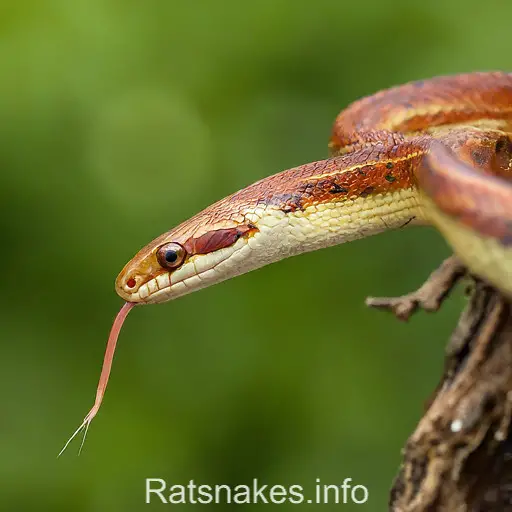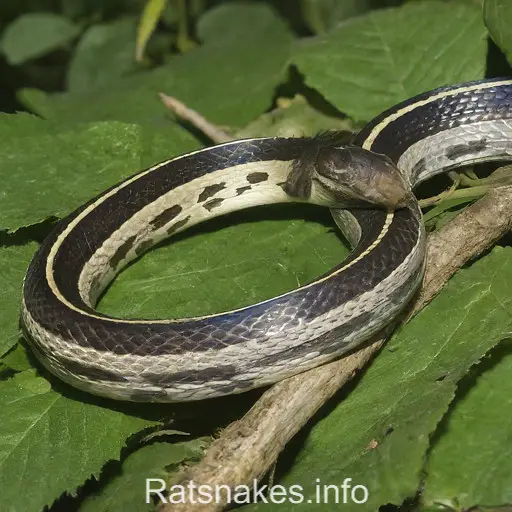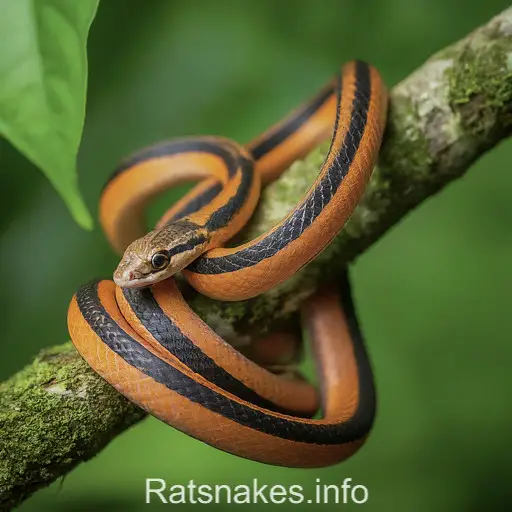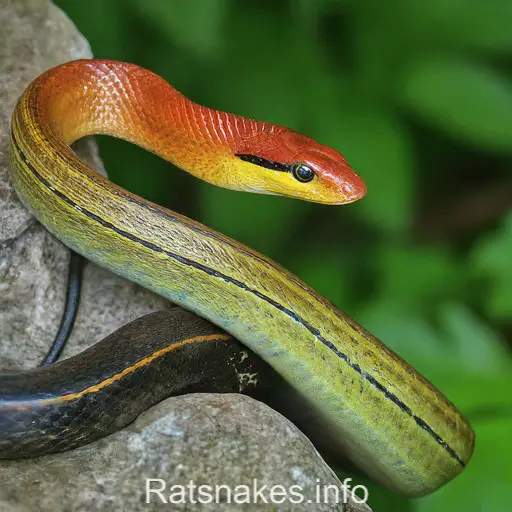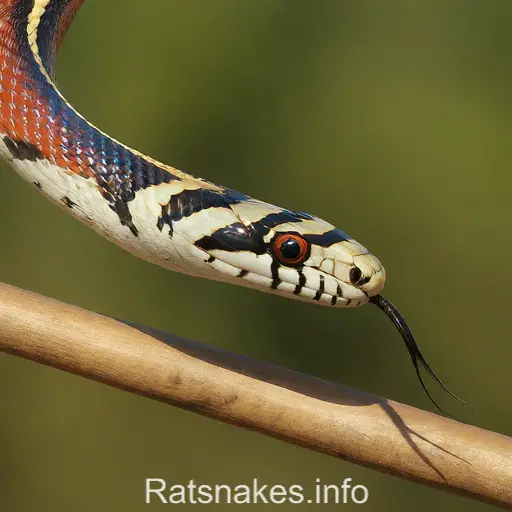
Are you curious about the mesmerizing Beauty Rat Snake? These stunning creatures are known for their vibrant colors and sleek appearance. In our article, we’ll delve into the fascinating world of these serpents, exploring their unique characteristics and behaviors. From their striking patterns to their graceful movements, Beauty Rat Snakes are truly captivating creatures that deserve our attention.
Join us as we uncover the secrets of these magnificent snakes and learn more about their habitat, diet, and importance in the ecosystem. Whether you’re a seasoned reptile enthusiast or simply intrigued by the wonders of nature, there’s something special about the Beauty Rat Snake that will leave you in awe. Let’s embark on this exciting journey together and discover the beauty and allure of these remarkable serpents.
Physical Characteristics
The Beauty Rat Snake is known for its striking appearance, characterized by vibrant colors and sleek scales. Here are some key physical characteristics that define this captivating snake:
- Coloration: Their coloration varies from shades of yellow, orange, red, and black, creating a beautiful contrast that sets them apart in the wild.
- Size: Adult Beauty Rat Snakes can reach lengths of 4-6 feet, making them a moderately sized species in the snake world.
- Scales: They have smooth, shiny scales that give them an elegant and streamlined look, reflecting light in a mesmerizing way.
- Eyes: Their eyes are large and round, with a keen sense of vision that helps them navigate their surroundings with precision.
- Body: With a slender body and graceful movements, Beauty Rat Snakes are agile climbers and adept at maneuvering through their natural habitats.
These physical characteristics not only contribute to their visual appeal but also play a vital role in their survival and ecological significance in the wild.
Color Variations
When it comes to Color Variations, the beauty rat snake truly lives up to its name. These stunning creatures can flaunt a diverse array of hues, ranging from vibrant oranges and reds to striking yellows and blacks. The beauty rat snake’s coloration is not only visually captivating but also serves a practical purpose in their natural habitat. Adapted to blend in with their environment, these snakes use their colors to camouflage effectively and avoid predators. This remarkable attribute showcases the evolutionary brilliance of these elegant reptiles.
Beauty rat snakes may possess distinctive patterns on their scales, adding another layer of intrigue to their appearance. Some individuals exhibit intricate stripes or speckles that further enhance their beauty. These patterns can vary widely among different specimens, making each snake unique in its aesthetics. Through these distinctive traits, beauty rat snakes showcase the wonders of nature and the remarkable diversity within their species.
In addition to their colorful physical attributes, beauty rat snakes also undergo ontogenetic color changes as they mature. Juvenile snakes often showcase different colors and patterns compared to their adult counterparts. This transformation adds a dynamic element to their visual appeal and highlights the fascinating life cycle of these remarkable reptiles. As we delve deeper into the world of beauty rat snakes, we uncover a myriad of mesmerizing colors and patterns that define these captivating creatures.
Habitat and Distribution
When it comes to habitat, Beauty Rat Snakes are predominantly found in forested areas with plenty of vegetation and tree cover. These snakes are highly adaptable and can thrive in a variety of environments ranging from tropical forests to grasslands. They are known to seek out locations with ample rocks and undergrowth where they can hide and hunt effectively.
In terms of distribution, Beauty Rat Snakes are native to Southeast Asia, including countries like Thailand, Vietnam, Malaysia, and Indonesia. Within these regions, they are commonly encountered in mountainous regions and subtropical forests. However, due to habitat loss and human encroachment, these snakes may also be found in urban areas seeking shelter and prey.
Overall, the habitat and distribution of Beauty Rat Snakes highlight their adaptability and survival skills in a changing environment, making them an intriguing species for researchers and enthusiasts alike.
Diet and Feeding Behavior
Beauty rat snakes are carnivores, feeding primarily on small mammals, birds, eggs, and sometimes even other reptiles, offering a glimpse into their role as predators in their ecosystems.
- These snakes are opportunistic feeders, meaning they will consume prey whenever the opportunity arises.
- They use their keen eyesight to locate potential meals, often hunting at night when their prey is most active.
- Beauty rat snakes are known for their constricting feeding strategy, squeezing their prey to subdue them before swallowing them whole.
- As they possess a large skull and a flexible jaw, they can swallow prey items much larger than their own head.
By understanding the diet and feeding behavior of beauty rat snakes, we gain insight into their ecological impact and the intricate balance within their natural habitats.
Reproduction
Reproduction in Beauty Rat Snakes is a fascinating aspect of their life cycle. These snakes typically mate in the spring months, with males seeking out females through pheromones. After successful courtship, females can lay anywhere between 4 to 20 eggs in a secluded nest, often in rotting logs or leaf litter to provide warmth and protection.
The incubation period for Beauty Rat Snake eggs is around 60-70 days, during which the female carefully guards the nest. Once the eggs hatch, the young snakes emerge fully developed and independent, ready to explore their surroundings. It’s crucial for the neonates to find suitable hiding spots and food sources early on to ensure their survival.
Interestingly, Beauty Rat Snakes exhibit no parental care beyond egg guarding, relying on their innate instincts to thrive. This reproductive strategy highlights the resilience and adaptability of these remarkable creatures in the wild. Studying their reproductive behaviors sheds light on their population dynamics and life history patterns in different habitats.
Over time, as the juvenile snakes grow and reach sexual maturity, the cycle begins anew as they partake in the intricate dance of courtship and reproduction. The reproductive cycle of Beauty Rat Snakes not only ensures the continuation of their species but also contributes to the biodiversity and ecological balance of their native habitats.
Conservation Status
When it comes to the Conservation Status of the Beauty Rat Snake, it is categorized as Least Concern according to the International Union for Conservation of Nature (IUCN). This classification indicates that the species is not currently facing a significant risk of extinction in the wild.
The habitat of Beauty Rat Snakes plays a crucial role in their conservation. Human activities like deforestation and habitat destruction pose potential threats to their populations. By preserving and protecting the forested areas where these snakes reside, we can contribute to their continued survival.
It is important to raise awareness about the importance of these snakes in maintaining ecological balance. Educating the public about the role Beauty Rat Snakes play in their ecosystems can foster appreciation for these creatures and encourage conservation efforts.
By understanding the ecological significance of the Beauty Rat Snake and the threats they face, we can work towards ensuring that these beautiful reptiles remain a thriving part of their natural habitats for generations to come.
Key Takeaways
- Physical Characteristics: Beauty Rat Snakes are known for their vibrant coloration, sleek scales, and agile movements, which not only contribute to their visual appeal but also aid in their survival.
- Color Variations: These snakes exhibit diverse hues and patterns, showcasing their ability to camouflage effectively in their environment and undergo ontogenetic color changes as they mature.
- Habitat and Distribution: Beauty Rat Snakes are adaptable creatures found in forested areas of Southeast Asia, highlighting their survival skills in changing environments.
- Diet and Feeding Behavior: These carnivores primarily feed on small mammals, birds, and reptiles, showcasing their role as predators and their constricting feeding strategy.
- Reproduction: Mating in spring, female Beauty Rat Snakes lay 4-20 eggs in secluded nests, exhibiting minimal parental care and relying on innate instincts for survival.
- Conservation Status: Classified as Least Concern, preserving their habitats and raising awareness about their ecological significance is crucial to ensuring the continued survival of Beauty Rat Snakes.
Conclusion
The Beauty Rat Snake’s vibrant colors and unique physical characteristics make them fascinating creatures to study. Their ability to adapt to diverse environments and their intriguing reproductive behaviors contribute to the biodiversity and ecological balance of their habitats. As carnivorous reptiles, they play a crucial role in maintaining the ecosystem by preying on small mammals, birds, and reptiles. Understanding their population dynamics and life history patterns is essential for conservation efforts. Despite being categorized as Least Concern by the IUCN, human activities such as deforestation pose significant threats to their survival. By raising awareness about the importance of preserving their habitats, we can ensure the continued thriving presence of Beauty Rat Snakes in their natural ecosystems.

